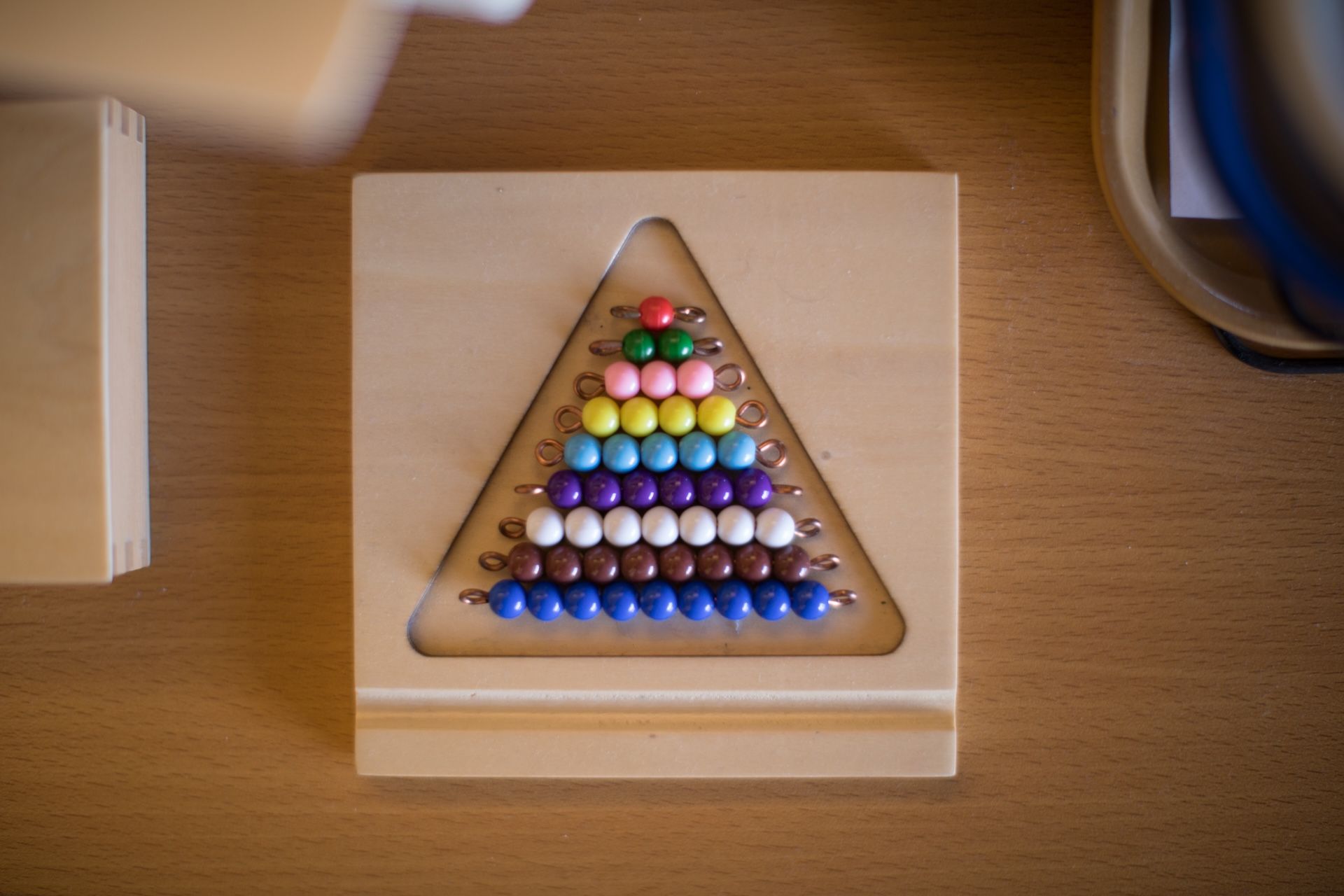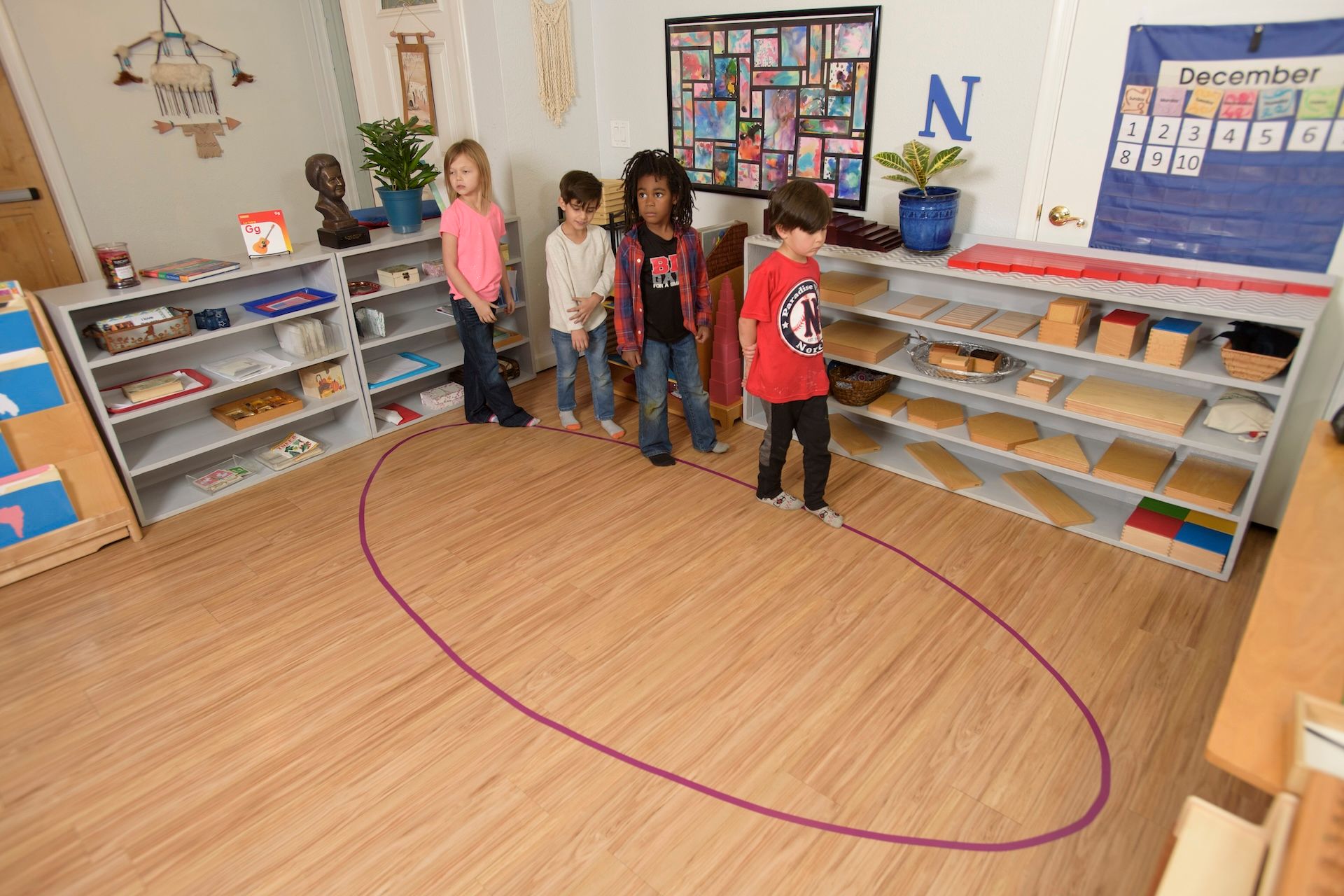The curriculum of a Montessori classroom emphasizes specific skills while enhancing a child’s natural learning process. Children are introduced to the program through a variety of hands-on activities in a prepared environment.
Sensorial
Children naturally use their powers of observation during the early years, which is why Dr. Montessori felt they should be given materials that would not only sharpen the senses but also encourage a deeper awareness of the details in the world around them. Sensorial materials in the Montessori classroom include items children can sort by size, shape, smell, color, touch and sound. This approach allows children to classify sensorial impressions in an organized and orderly manner.
Practical Life
Certain aspects of daily life can be challenging for a toddler, which is why we take the time to slow down and direct focus on these everyday practical life skills. Practical life instruction includes exercises such as pouring, spooning, polishing, mopping, sweeping, bead stringing, opening, and closing. By focusing on activities such as these, we help enhance the child’s development of fine motor control, balance, sense of order, concentration, hand-eye coordination, and independence.
Math
The math area of the classroom is centralized around one to one correspondence works. At this young age, a child needs to truly understand the concept of ‘one’ before moving onto counting. Children can easily memorize high numbers, without necessarily understanding what those numbers mean, which is why we only focus on counting up to 5 at this young age.
Language
By refining and enriching a child’s language, we pave the way to writing and reading. To do this, we work with many different language concepts such as naming objects, exploring opposites, and matching (i.e. object to object, object to picture and picture to picture). To further expand and solidify vocabulary, a hands-on approach in dealing with objects is encouraged. Additionally, language objects are introduced in both English and Spanish.
Art
When it comes to art, the Montessori way focuses more on the process of creating, rather than the end result. To help develop your child’s fine motor skills, and nurture their creativity, we have many different mediums for your child to explore. Painting with a brush, sponge stamping, food stamping, finger painting, drawing, gluing, cutting with scissors and paper tearing are just some of the many ways your child will learn to be creative.
Music
Toddlers will be introduced to concepts such as beat, meter, and rhythm through the wide variety of instruments available for them to explore. Whether sitting or dancing around, children are encouraged to have fun making music. Puzzles are also used to help build musical vocabulary.
Library
To provide children with an environment similar to the one they have at home, a comfy living room, called the library, is offered as space for relaxation. Children have the option to lay down with pillows and blankets or sit and read one of the many books in the room. Since reading is so important, we instill a love of books at a very early age. To many—including us—books are sacred. This is why children are taught to teach books with the utmost respect.
The library also serves as space for inspiration and creativity. A basket full of pretend play items is available for children to dress up and mimic the grown-up world around them.
Gross Motor
Gross motor skills are heightened in activities that require movement, which is why the majority of our gross motor instruction takes place in the gym or outdoor environment. Some gross motor items that are provided for children to use include a scooter, a balance beam, a basketball hoop, wagons, balls for rolling, and lawn mowers for pushing.
The post The Montessori Toddler Journey appeared first on Pebblecreek Montessori.
Hours
MONDAY - FRIDAY
HALF DAY: 8:30a – 12 noon
ACADEMIC DAY: 8:30a – 3:30p
EARLY CARE: 7:00a – 8:30a
AFTER CARE: 3:30p – 6:00p
OFFICE: 8:00a - 4:00p
Programs
Connect
Pebblecreek Montessori





